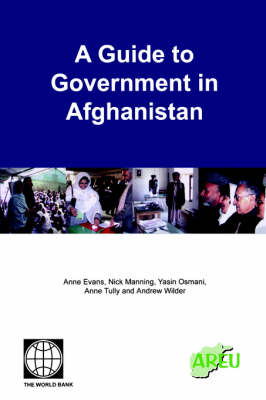A Guide to Government in Afghanistan has three objectives: i) it seeks to provide newcomers to the administrative and political scene in Afghanistan with a basic guide to the structures and processes of government; ii) it intends to provide reformers with some understanding of how to work ""with the grain"" of the existing institutional arrangements; and iii) it seeks to pay tribute to the remarkable people who have kept the system running and who are now reforming it. In pursuing these objectives, this guide attempts to set out the underlying strengths of the public sector, describing the evolution of the Afghan state, the current political context, and the administrative and organizational components of the government. It sets out the legal basis and organizational responsibilities for key fiscal tasks including revenue collection, budget preparation and execution, and accounting and audit. It also describes the organizational structures in the provinces, the way in which the staffing establishment is determined, and the structure of pay and grading. In particular, it looks at the arrangements for service delivery in the education and health sectors. The guide draws the bulk of its material from six provincial case studies: Faryab and Herat, undertaken in November 2002; Badakhshan and Wardak, in April 2003, Kandahar in June 2003, and finally Bamyan in July 2003. The paper has also benefited from additional research undertaken by the Afghanistan Research and Evaluation Unit (AREU) and the World Bank.
- ISBN13 9780821358351
- Publish Date 30 April 2004
- Publish Status Active
- Publish Country US
- Imprint World Bank Publications
- Format Paperback
- Pages 150
- Language English
